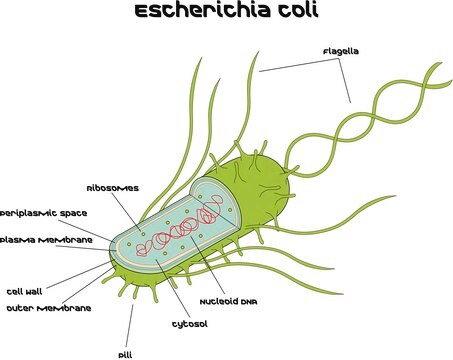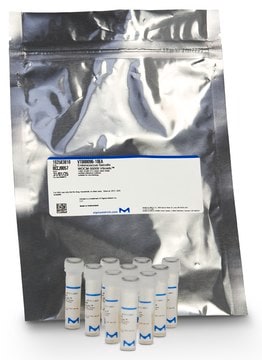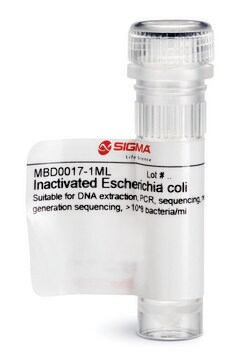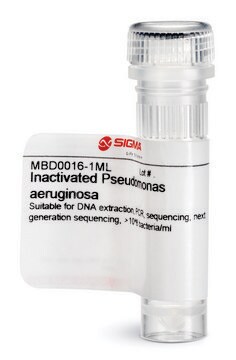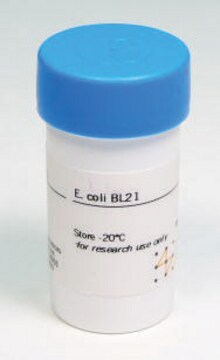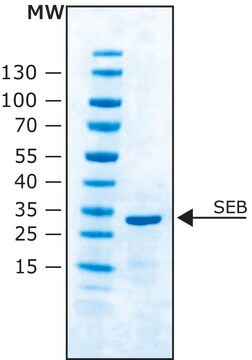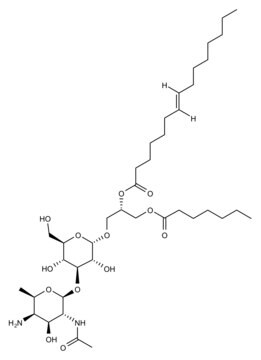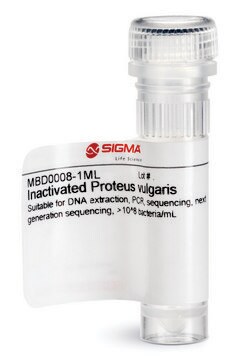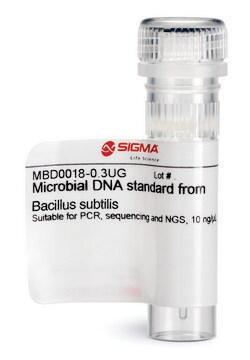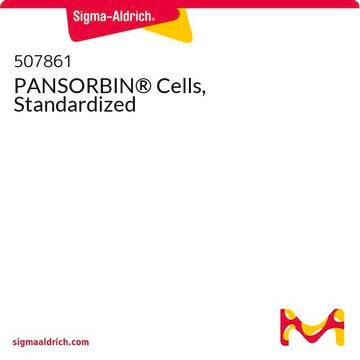S2014
Staphylococcus aureus
buffered aqueous suspension, Wood 46 strain
Zaloguj sięWyświetlanie cen organizacyjnych i kontraktowych
About This Item
Kod UNSPSC:
12352202
NACRES:
NA.81
Polecane produkty
pochodzenie biologiczne
Staphylococcus aureus
Poziom jakości
sterylność
Not processed or packaged aseptically
Postać
buffered aqueous suspension
skład
Cell suspension, ~10% wet weight/volume
temp. przechowywania
2-8°C
Opis ogólny
Staphylococcus aureus Wood 46 is protein A deficient and spa negative. It shares 98% to 99% genome identity with S.aureus and shows a lower surface expression of cell wall-associated protein A.
Zastosowanie
(Not intended for use as a starter culture.)
Staphylococcus aureus has been used:
- to mimic infection and induce fever in Pekin duck
- to test its effect on hemocyte morphology in hemolymph samples from beetle Tenebrio molitor larva
- in the antibacterial activity and minimum inhibitory concentration (MIC) assay with gedunin and 7-deacetoxy-7αhydroxygedunin potassium salt
Wood 46, a non-protein A producing S. aureus strain, prepared by the same method as P7155 (Protein A, crude cell suspension-Cowan strain), may be used as a control in protein A-immunoglobulin binding studies.
Działania biochem./fizjol.
Staphylococcus aureus Wood 46 displays reduced virulence compared to the S. aureus. This isolate is useful in understanding protein A role in pathogenesis and virulence.
Postać fizyczna
Formalin-fixed crude cell suspension of essentially non-viable S. aureus (Wood 46 strain) in 0.05 M potassium phosphate buffer, pH 7.5, containing 0.2% sodium azide
Uwaga dotycząca przygotowania
Produced in pure culture.
Komentarz do analizy
This strain binds less than 10% of the rabbit IgG bound by P 7155 as assayed by a modification of the method of Kessler.
This page may contain text that has been machine translated.
Kod klasy składowania
10 - Combustible liquids
Klasa zagrożenia wodnego (WGK)
WGK 3
Temperatura zapłonu (°F)
Not applicable
Temperatura zapłonu (°C)
Not applicable
Certyfikaty analizy (CoA)
Poszukaj Certyfikaty analizy (CoA), wpisując numer partii/serii produktów. Numery serii i partii można znaleźć na etykiecie produktu po słowach „seria” lub „partia”.
Masz już ten produkt?
Dokumenty związane z niedawno zakupionymi produktami zostały zamieszczone w Bibliotece dokumentów.
Klienci oglądali również te produkty
S W Kessler
Journal of immunology (Baltimore, Md. : 1950), 117(5 Pt 1), 1482-1490 (1976-11-01)
Procedures are detailed for the rapid isolation of representative cell membrane antigens with protein A-bearing staphylococci as an adsorbent for IgG antibodies complexed with the antigens. Cell surface membrane proteins were radioiodinated and solubilized in nonionic detergent. Specific antisera were
G Kronvall et al.
Infection and immunity, 3(1), 10-15 (1971-01-01)
Protein A of Staphylococcus aureus can be detected on cell walls of intact bacteria by use of radioactively labeled myeloma globulin. Of 156 strains of S. aureus, 141 (90%) contained protein A. None of 47 S. epidermidis strains was positive
M Marais et al.
Poultry science, 90(6), 1234-1238 (2011-05-21)
Poultry, like mammals and other birds, develop fever when exposed to compounds from gram-negative bacteria. Mammals also develop fever when exposed to the constituents of viruses or gram-positive bacteria, and the fevers stimulated by these different pathogenic classes have discrete
Elżbieta Czarniewska et al.
Scientific reports, 9(1), 14027-14027 (2019-10-03)
To induce the water solubility of hexagonal boron nitride (h-BN), we exfoliated and functionalized bulk h-BN with hydroxyl groups (h-BN-OH-n). Short-term studies showed that h-BN-OH-n induced low cytotoxicity in different models: insect haemocytes (in vivo), human erythrocytes and mouse fibroblasts
Arkadiusz Urbański et al.
Micron (Oxford, England : 1993), 104, 8-20 (2017-10-20)
The evolutionary success of insects is undoubtedly related to a well-functioning immune system. This is especially apparent during insect development by the adaptation of individuals to the changing risk of infection. In addition, current studies show that the insect immune
Nasz zespół naukowców ma doświadczenie we wszystkich obszarach badań, w tym w naukach przyrodniczych, materiałoznawstwie, syntezie chemicznej, chromatografii, analityce i wielu innych dziedzinach.
Skontaktuj się z zespołem ds. pomocy technicznej